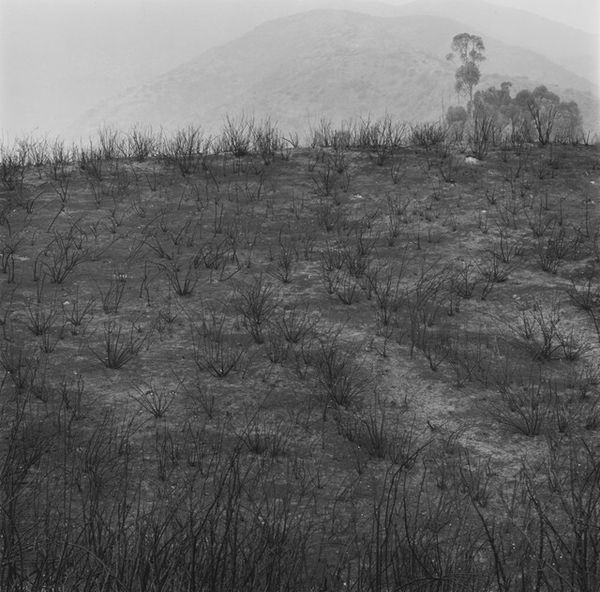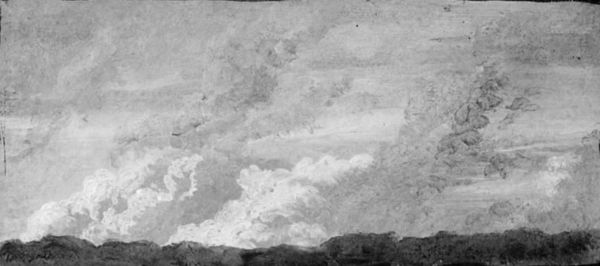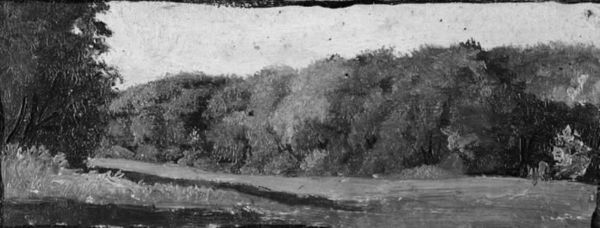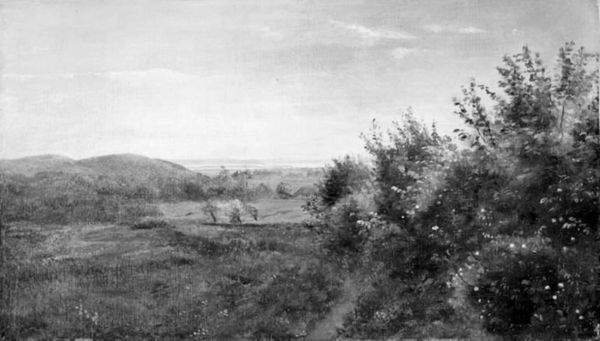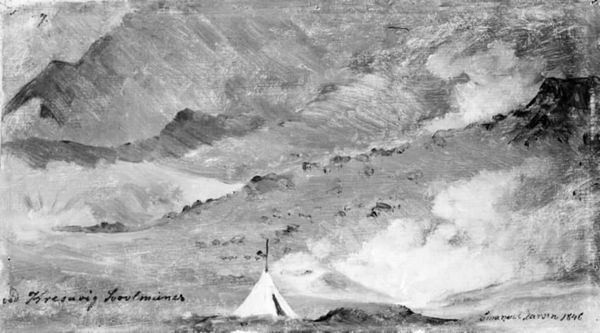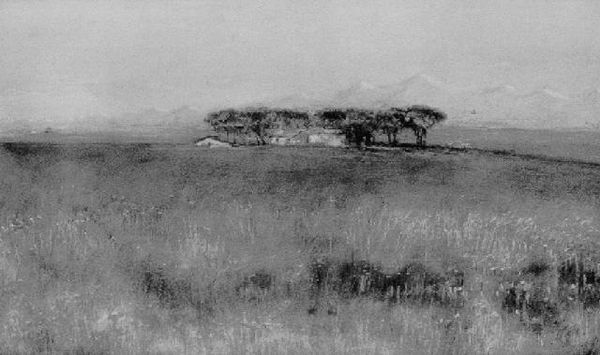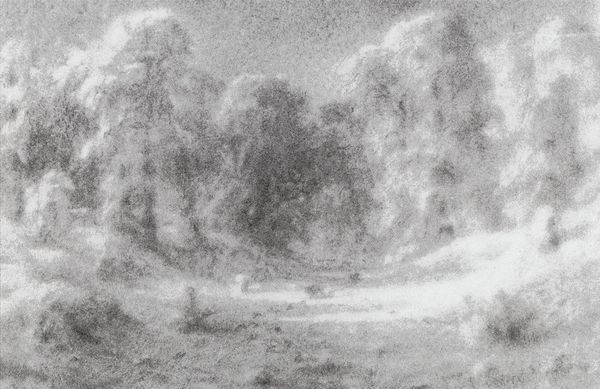
canvas
#
black and white photography
#
snowscape
#
countryside
#
canvas
#
monochrome photography
#
gloomy
#
fog
#
monochrome
#
skyscape
#
mist
#
shadow overcast
Dimensions: 135 cm (height) x 190 cm (width) (Netto)
Editor: So this is "Aftenlandskab," or "Evening Landscape," painted by Viggo Pedersen in 1889. It's an oil on canvas, and looking at it, I feel this sense of almost overwhelming gloom. It feels so stark, so…empty. How do you interpret this work? Curator: That gloom, that emptiness, is precisely where its power lies. Consider the date: 1889. This was a period of immense social and political upheaval, the rise of industrialism, urbanization, and growing social inequality. Could Pedersen be reflecting a societal anxiety? Editor: You mean the landscape is a metaphor? For… something bigger? Curator: Precisely! Think about it: A monochromatic palette, emphasizing the lack of hope or vibrancy. The desolate foreground leads our eye towards the hill, suggesting a goal that's almost unreachable. It seems less about depicting a specific place, and more about evoking a state of mind – a collective consciousness, perhaps. How does that reading resonate with you? Editor: I see what you mean. It does make the painting feel less like just a pretty scene and more like a… a statement. But about what, exactly? Curator: About the alienation and uncertainty of the modern experience, perhaps. Or even the feeling of powerlessness in the face of societal changes. How might Pedersen's own socio-economic background influence this perspective, do you think? Editor: He was painting during a period of change in economic and political policies, a period when many land-workers and people were pushed off their own properties by economic pressures and colonial power…Maybe this is it; painting is another language. I had been reading it only for face value. Thanks. Curator: Exactly. Art offers that critical lens through which we can examine power, identity, and resistance. Let's keep questioning and keep opening the dialogues about Viggo Pedersen’s social role.
Comments
No comments
Be the first to comment and join the conversation on the ultimate creative platform.
